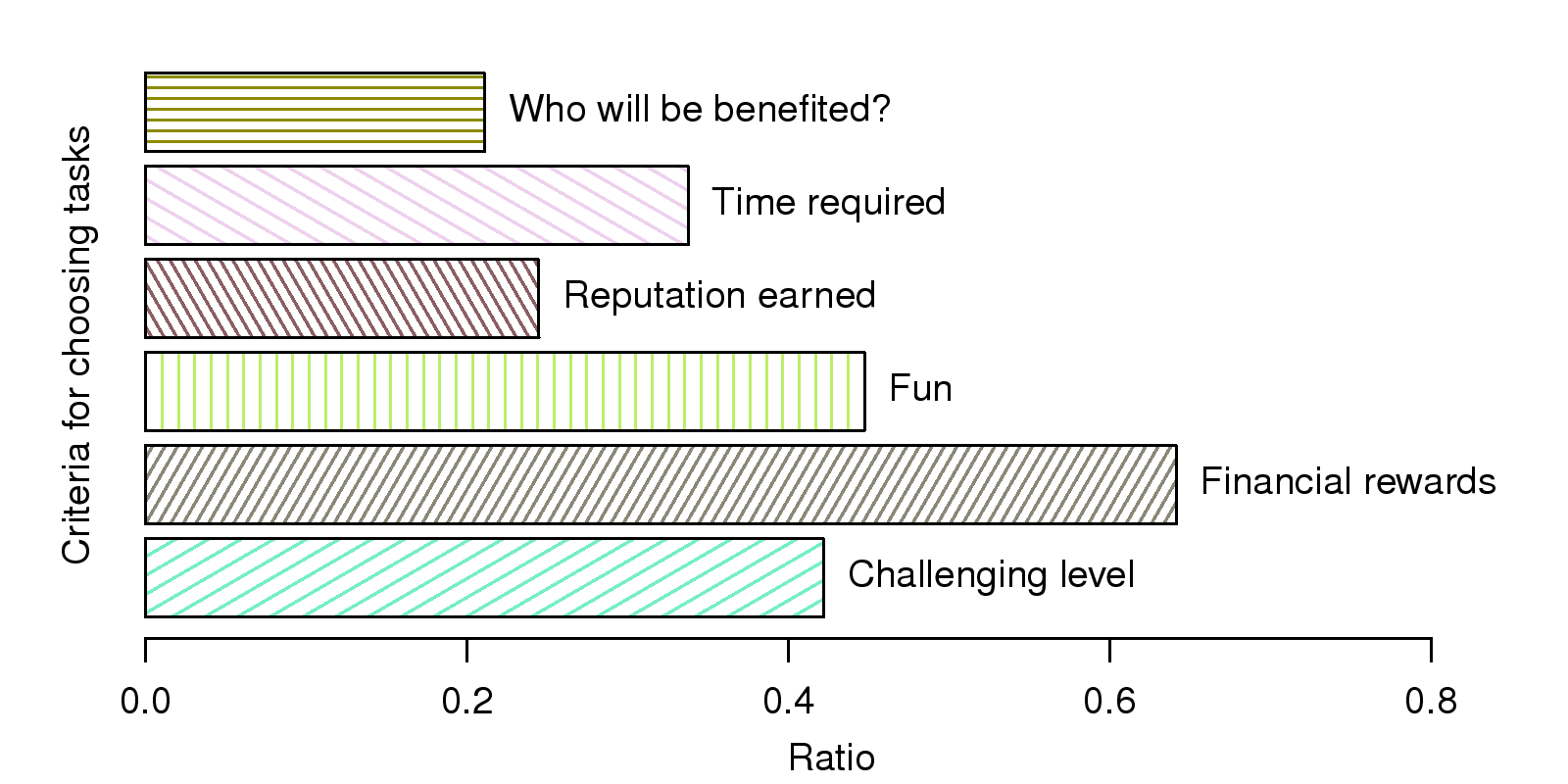[ Hossain2012]
Hossain, M.
2012.
Users' motivation to participate in online crowdsourcing platforms.
In
2012 International Conference on Innovation Management and
Technology Research, 310-315.
IEEE.
[ Kittur, Chi, and Suh2008]
Kittur, A.; Chi, E. H.; and Suh, B.
2008.
Crowdsourcing user studies with Mechanical Turk.
In
Proceedings of the SIGCHI Conference on Human Factors in
Computing Systems, 453-456.
ACM.
[ Ross et al . 2010]
Ross, J.; Irani, L.; Silberman, M.; Zaldivar, A.; and Tomlinson, B.
2010.
Who are the crowdworkers?: shifting demographics in mechanical
turk.
In
Proceedings of the 28th of the international conference
extended abstracts on Human factors in computing systems, 2863-2872.
ACM.
[ Wu et al . 2013]
Wu, C.-C.; Chen, K.-T.; Chang, Y.-C.; and Lei, C.-L.
2013.
Crowdsourcing Multimedia QoE Evaluation: A Trusted Framework.
IEEE Transactions on Multimedia.
